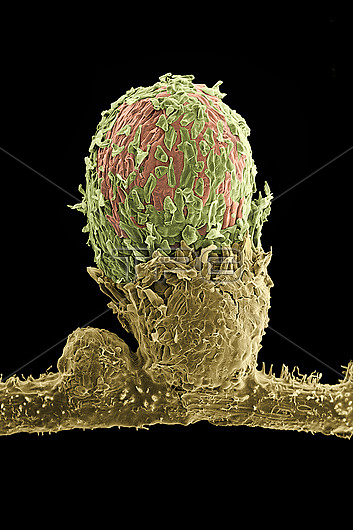
Scanning electron micrograph of nitrogen-fixing nodules on a root of clover, Trifolium repens. The picture shows two nodules arising from the (horizontal, brown) root; one, to left, small, not fully developed, and an active nodule, 2.5mm high (centre, pink). They are the plant's reaction to infection by the soil bacterium Rhizobium leguminosarum. Inside an active nodule, the bacterium is able to "fix" atmospheric nitrogen, producing ammonium salts. This is an example of symbiosis (mutualism); the bacterium benefits from plant carbohydrates made by photosynthesis; the plant benefits from the fixed nitrogen. Artificial fertilisers contain nitrogen as ammonium or nitrates. Leguminous crops require less use of chemical fertilisers. Bacteria - mainly Rhizobium spp - fix 150-200 million tonnes/yr of nitrogen; approximately three times the output of the global chemical fertiliser industry
| px | px | dpi | = | cm | x | cm | = | MB |
Details
Creative#:
TOP26709384
Source:
達志影像
Authorization Type:
RM
Release Information:
須由TPG 完整授權
Model Release:
N/A
Property Release:
N/A
Right to Privacy:
No
Same folder images:

 Loading
Loading